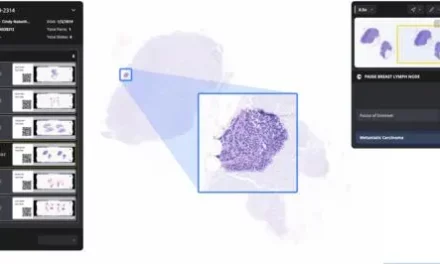Summary
The ongoing trend of antimicrobial resistance in Staphylococcus aureus significantly increases the global clinical burden, with laboratory diagnostics being crucial in combating this issue.
Takeaways
- Prevalence and Impact: Staphylococcus aureus, including methicillin-resistant strains (MRSA), is a common colonizer that can become a deadly pathogen, contributing significantly to morbidity and mortality worldwide.
- Resistance Detection: Laboratory diagnostics, such as bacterial culture, nucleic acid amplification, and resistance testing, are essential for detecting and managing MRSA, aiding in infection control and appropriate treatment selection.
- Public Health Concern: The spread of antimicrobial resistance in S. aureus is a major public health issue, with initiatives like the One Health program aiming to mitigate this threat through coordinated efforts across human, animal, and environmental health sectors.
Continued trends of antimicrobial resistance in Staphylococcus aureus contributes to worldwide clinical burden. Laboratory diagnostics play a key role in pushing back against this trend.
By Tyler Radke, MLS(ASCP)
Staphylococcus aureus is a common commensal bacteria that can be found colonizing the upper respiratory tract in up to 30% of the population.1 In this way, S. aureus is not typically pathogenic however it has several traits that promote it toward becoming an opportunistic pathogen. Once pathogenesis is initiated, S. aureus can deploy a multitude of virulence properties, quickly becoming deadly when in conjunction with emerging antibiotic resistant strains.
Where Is Staphylococcus aureus Found?
Staphylococcus aureus is a frequent inhabitant of humans, as well as animals, giving it zoonotic potential. Areas of colonization are the skin, ears, nose, throat, gastrointestinal and urogenital tracts. It finds similar habitation in animals, becoming part of the indigenous flora.
Nasal colonization is the most common habitation for S. aureus, with a population prevalence estimated at 20-40%.2 In healthcare settings, S. aureus transmission is potentiated via health care personnel traversing rooms and the moving of contaminated objects.
The development of multi-drug resistance (MDR) traits in this bacterium promoted the emergence and spread of methicillin resistant S. aureus (MRSA). Worldwide, MRSA has taken on community-associated, livestock-associated, and healthcare associated forms or CA-MRSA, LA-MRSA, and HA-MRSA respectively.
In short, S. aureus is readily prevalent, posing difficulty for both public health and agricultural health management practices that are now dealing with the growing trend of antibiotic resistance in S. aureus.
Who Gets Infected with Staphylococcus aureus?
S. aureus and even MRSA are common indigenous flora, rarely causing problems in the immunocompetent. Interestingly, nasal colonization is a primary source of invasive infections.3 Several factors can promote the development of infection with MRSA including compromised skin integrity, recent antimicrobial therapy, immunosuppression, traumatic introduction, or device implantation.
MRSA is of growing concern due to the continued spread within the community and hospital settings, blurring the lines4 between CA-MRSA and HA-MRSA. Of particular interest is the CA-MRSA lineage type USA300 which has worldwide5 prevalence, having spread due to its resistance and virulence factors.
Whether colonization or infection, those most at risk include persons with high exposure to close quarters activities or living situations, including:
- Daycare children
- Athletes (e.g., wrestling and football)
- Military personnel
- Inmates
However, other groups are becoming increasingly infected or colonized.
How Does S. aureus Cause Infection?
S. aureus is an opportunist, exploiting breaks in the skin or becoming pathogenic following a bout of immunosuppression or taxation. Localized infections include impetigo, pyoderma, and wounds. Any localized infection can spread to a deep infection, causing abscess formation, bacteremia or endocarditis. Surgical site infections also occur and may lead to systemic infection if not appropriately treated. Additionally, infections may arise as a complication following recent viral illness. With inherent virulence and development of MDR traits, MRSA is the second leading cause6 of health-care-associated infections. In the healthcare setting, MRSA predominates in ventilator-associated pneumonia.
The arsenal of virulent factors intrinsic among S. aureus strains promotes its infectious potential. Several of these mechanisms have been well studied as determining factors influencing infection and spread, including:
- Capsule
- Protein A
- Exotoxin TSST-1
- Enterotoxin A & E
- Epidermolytic toxins A & B
- Panton-Valentine leucocidin toxin (PVL)
The virulence factor most notable in CA-MRSA strains is the Panton-Valentine leucocidin (PVL7) toxin, a pore-forming toxin. The PVL toxin is found at a high frequency in CA-MRSA strains, enabling CA-MRSA to cause necrotizing fasciitis, myositis, and (rarely) necrotizing pneumonia. In general, many toxin-mediated diseases are caused by S. aureus (MSSA) and MRSA.
How is S. aureus and Methicillin Resistance Detected?
S. aureus is detected through several laboratory procedures, such as routine bacterial culture, surveillance culture, and nucleic acid amplification. In routine bacterial culture, S. aureus can be definitively identified by MALDI-TOF, colonial characteristics, coagulase results, and other biochemicals.
Methicillin resistance in S. aureus is determined by use of a cefoxitin disk or screening well, the current preferred method of detection by CLSI and EUCAST. The minimum inhibitory concentration (MIC) may also be used to determine methicillin resistance, though some questions linger regarding reliability due to heterogeneous expression of PBP2a. The use of anti-PBP2a in a latex agglutination format is also available for discrimination of methicillin resistant vs methicillin susceptible S. aureus on pure colony isolates. MALDI-TOF with machine learning is another method being investigated8 for its potential to differentiate MRSA from MSSA.
Surveillance culture detects MRSA strains by inhibitory chromogenic media. The media is selective for Staphylococcus aureus by inhibiting growth of other colonizing organisms. Other inhibitory agents are included to prevent growth of MSSA while allowing for growth of MRSA. MRSA colonies are oxacillin resistant via the mecA gene and will produce a pink, magenta, or mauve colony depending on the media composition.
Surveillance culture has been largely supplanted by nucleic acid amplification for MRSA colonization detection. Screening is performed directly on a specimen swab, targeting several genes dependent on the manufacturer. Common gene targets of Staphylococcus aureus include the staphylococcal protein A, the nuc gene, gyrB gene and the mecA gene for differentiation of MRSA from MSSA. Some assays are further refined to include mecC gene for additional MRSA detection and the SCCmec right extremity junction (MREJ) to help differentiate MRSA from other oxacillin resistant staphylococcus spp.
With NAA assays, results complete significantly faster than traditional surveillance culture, reducing result time from days to hours. Expediency is a feature that is advantageous when ruling out isolation precautions that are costly, burdensome, and stigmatic.
How Is Staphylococcus aureus Treated?
Penicillin was the historical drug of choice for treating infections of S. aureus prior to the development of antimicrobial resistance. S. aureus is now nearly completely resistant to penicillin, producing a beta-lactamase enzyme encoded by the blaZ gene. Resistance to penicillin is detected by disk diffusion, PCR assay, or chromogenic detection via nitrocefin disk. However, it is now noted that nitrocefin-based assays have suboptimal sensitivity and can result in reporting of false susceptibility in S. aureus. If susceptible to penicillin via disk diffusion or PCR determination, therapy using a first-generation cephalosporin or anti-staphylococcal penicillin is preferred as demonstrated by improved clinical outcomes compared to other antibiotics.
When resistant to penicillin, methicillin resistance becomes the next clinically important factor determining antimicrobial selection. Methicillin is not used to treat infections; however, methicillin resistance is a surrogate marker to determine susceptibility to all beta-lactams like oxacillin, nafcillin, most cephalosporins, and carbapenems.
MRSA requires treatment with a second- or third-level antibiotic. According to the Clinical Laboratory Standards Institute (CLSI), this includes trimethoprim-sulfamethoxazole, clindamycin, or tetracycline depending on infection site. Third-level antibiotics for consideration include:
- Vancomycin
- Daptomycin
- Linezolid
- Ceftaroline
- Or fluoroquinolones.
Resistance to these various classes of antibiotics is determined by the broth MIC method.
When resistance to several tertiary level antibiotics is met, clinicians are left with few choices for antibiotic selection. The lipoglycopeptide class containing dalbavancin, oritavancin, and telavancin may be considered.
Antibiotic escalation is considered on preliminary detection of S. aureus. Driving the decision of antibiotic selection for empiric coverage is the consideration of whether an isolate could be MSSA, CA-MRSA, or HA-MRSA.
The GrowingConcern of AMR in S. aureus
Resistance in S. aureus has been an ongoing battle since the first antibiotic was used to treat an infection. MSSA has been pressured by humanity’s use of antibiotics, inducing evolutionary trait and resistance development as a means to survive. Penicillin resistance in S. aureus is common, occurring in approximately 75% of strains. More concerning is the rate at which methicillin resistance is occurring, a trend that can be reviewed at the antimicrobial resistance patient safety portal from the Centers for Disease Control.
CA-MRSA has a widely variable prevalence, ranging from as low as 1.3% in community colonization to as high as 30% among infected patients. Though CA-MRSA tends to be more susceptible to antibiotics than HA-MRSA, there is growing concern that CA-MRSA is becoming endemic among hospitalized patients. As resistance genes are shared between phenotypes, a lack of a clear distinction between CA-MRSA and HA-MRSA may occur.
HA-MRSA is found primarily amongst healthcare settings, with a prevalence near 40%. HA-MRSA is notorious for harboring resistance to additional antibiotics such as trimethoprim-sulfamethoxazole, fluoroquinolones, and tetracyclines. Together, between CA-MRSA and HA-MRSA, the ability to respond to infections is an evolving race between drug discovery and further resistance development.
The Disease Burden of MRSA
The burden of disease being caused by antimicrobial resistance has reached national spotlight, with the release of the 2019 report from the Centers for Disease Control and more recently with the U.S. government release of the National Action Plan for Combating Antibiotic-Resistant Bacteria. Highlighted in both reports is the 35,000 deaths each year that are occurring due to antibiotic resistant infections. Additionally, there is significant morbidity that accompanies the 2.8 million antibiotic resistant infections. Amazingly, this is seen as an improvement from the 2013 report, tallying fewer total deaths associated with AMR since that time.
Looking at MRSA’s contribution to AMR associated morbidity and mortality, a study in 2019 found that resistant S. aureus accounted for more AMR attributable deaths in the Americas than any other pathogen. This study found MRSA responsible for greater than 100,000 deaths annually in the Americas due to resistance to treatment and numerous pathogenic traits. It further determined that the likelihood of fatality with MRSA is 43% greater than an infection with MSSA. In total, the greatest diseases associated with MRSA attributable deaths were lower respiratory tract infections and bloodstream infections.
MRSA Final Thoughts
Unfortunately, AMR is spreading as antibiotics are prescribed for inappropriate conditions, such as in agriculture, and the phenomenon of commonplace. global travel. MRSA has long been a concern in the health care community and still reigns supreme today as the single most deadly AMR bacteria on a global scale. Tried-and-true lab diagnostics for screening, detection, and surveillance can be used in combination with infection prevention practices to reduce hospital and community-based transmission.
There is now an international focus on reducing AMR through various task forces and policies such as the One Health program. One Health is a joint effort across multiple science disciplines that focuses on reducing AMR by showing that the health of animals, humans, and the environment are interconnected. With a worldwide initiative to reduce AMR in S. aureus and other bacteria, appropriate detection and surveillance from the laboratory will play a key role in the effective curtailing of further AMR generation, thereby reducing associated morbidity and mortality.
Tyler Radke, MLS(ASCP) has been both a generalist and technical lead of microbiology. Since 2017, he has been the laboratory manager at Bellin Memorial Hospital and Bellin Health Oconto Hospital in Wisconsin. He is also a member of the laboratory technical advisory group (LabTAG) for the Wisconsin Clinical Laboratories Network (WCLN). He is a regular contributor to CLP.
References
- Haag AF.Fitzgerald JR.Penadés JR.2019.Staphylococcus aureus in Animals. Microbiol Spectr7:10.1128/microbiolspec.gpp3-0060-2019.https://doi.org/10.1128/microbiolspec.gpp3-0060-2019
- Köck R, Werner P, Friedrich AW, Fegeler C, Becker K; Prevalence of Multiresistant Microorganisms (PMM) Study Group; Prevalence of Multiresistant Microorganisms PMM Study Group. Persistence of nasal colonization with human pathogenic bacteria and associated antimicrobial resistance in the German general population. New Microbes New Infect. 2015 Dec 1;9:24-34. doi: 10.1016/j.nmni.2015.11.004. PMID: 26862431; PMCID: PMC4706603.
- Lonneke G.M. Bode, M.D., Jan A.J.W. Kluytmans, M.D., Ph.D., Heiman F.L. Wertheim, M.D., Ph.D., Diana Bogaers, I.C.P., Christina M.J.E. Vandenbroucke-Grauls, M.D., Ph.D., Robert Roosendaal, Ph.D., Annet Troelstra, M.D., Ph.D., Adrienne T.A. Box, B.A.Sc., Andreas Voss, M.D., Ph.D., Ingeborg van der Tweel, Ph.D., Alex van Belkum, Ph.D., Henri A. Verbrugh, M.D., Ph.D., and Margreet C. Vos, M.D., Ph.D. New England Journal of Medicine Volume 362 • Number 1 • January 7, 2010 Pages: 9-17
- M. Bal, G.W. Coombs, M.T.G. Holden, J.A. Lindsay, G.R. Nimmo, P. Tattevin, R.L. Skov, Genomic insights into the emergence and spread of international clones of healthcare-, community- and livestock-associated meticillin-resistant Staphylococcus aureus: Blurring of the traditional definitions, Journal of Global Antimicrobial Resistance, Volume 6, 2016, Pages 95-101, ISSN 2213-7165, https://doi.org/10.1016/j.jgar.2016.04.004. (https://www.sciencedirect.com/science/article/pii/S2213716516300388)
- Challagundla L, Luo X, Tickler IA, Didelot X, Coleman DC, Shore AC, Coombs GWSordelli DO, Brown EL,Skov R, Larsen AR, Reyes J, Robledo IE, Vazquez GJ,Rivera R, Fey PD, Stevenson K, Wang S, Kreiswirth BN, Mediavilla JR, Arias CAPlanet PJ, Nolan RL,Tenover FC, Goering RV, Robinson DA.2018.Range Expansion and the Origin of USA300 North American Epidemic Methicillin-Resistant Staphylococcus aureus. mBio9:10.1128/mbio.02016-17.https://doi.org/10.1128/mbio.02016-17
- Weiner-Lastinger LM, Abner S, Edwards JR, Kallen AJ, Karlsson M, Magill SS, Pollock D, See I, Soe MM, Walters MS, Dudeck MA. Antimicrobial-resistant pathogens associated with adult healthcare-associated infections: Summary of data reported to the National Healthcare Safety Network, 2015-2017. Infect Control Hosp Epidemiol. 2020 Jan;41(1):1-18. doi: 10.1017/ice.2019.296. Epub 2019 Nov 26. PMID: 31767041; PMCID: PMC8276252.
- Yves Gillet, MD; Bertrand Issartel, MD; Philippe Vanhems, MD; Jean-Christophe Fournet, MD; Gerard Lina, MD; Michèle Bes, PhD; et al. Association between Staphylococcus aureus strains carrying gene for Panton-Valentine leukocidin and highly lethal necrotising pneumonia in young immunocompetent patients. Mechanisms of Disease. VOLUME 359, ISSUE 9308, P753-759, MARCH 02, 2002. https://doi.org/10.1016/S0140-6736(02)07877-7
- Yu J, Tien N, Liu YC, Cho DY, Chen JW, Tsai YT, Huang YC, Chao HJ, Chen CJ. Rapid Identification of Methicillin-Resistant Staphylococcus aureus Using MALDI-TOF MS and Machine Learning from over 20,000 Clinical Isolates. Microbiol Spectr. 2022 Apr 27;10(2):e0048322. doi: 10.1128/spectrum.00483-22. Epub 2022 Mar 16. PMID: 35293803; PMCID: PMC9045122.





